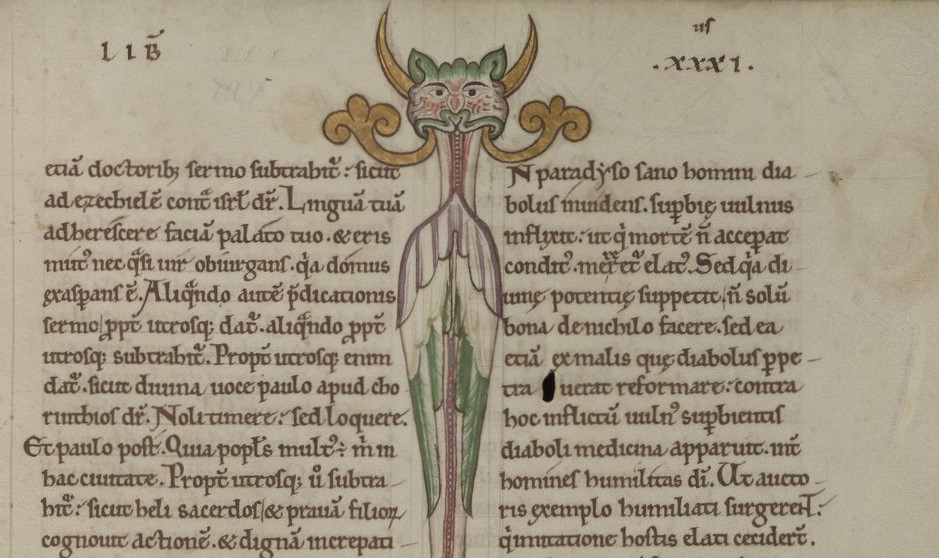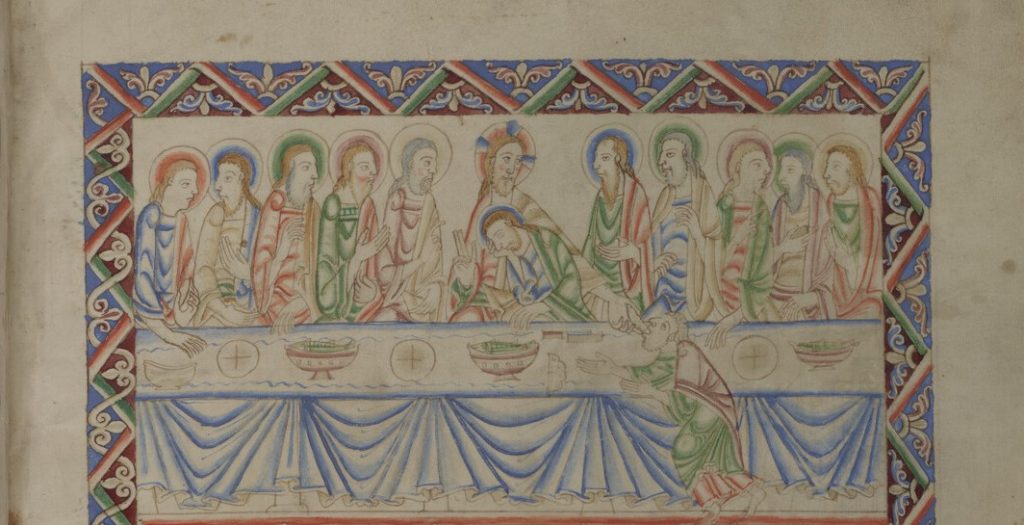Secrets of the Abbey: History Returns
Big celebrations are taking place this year in the town of Bury St Edmunds, marking the 1000th anniversary of the foundation of its Benedictine abbey. In the middle ages, it was one of the richest and most powerful abbeys in England. As the final resting place of the body of the martyred king St Edmund who was killed by the Vikings in 869 CE, it became a popular place of pilgrimage. Among the tours, pilgrimages, concerts, talks and picnics that have been organised to celebrate the abbey’s millennium, one of the most exciting (at least for those of us who are fond of medieval manuscripts!) is the exhibition in St Edmundsbury cathedral of a group of books from the medieval abbey library. These books have not been back in Bury since the abbey was closed in 1539 as part of Henry VIII’s dissolution of the monasteries. They were saved from the abbey and were donated to Pembroke College in Cambridge by William Smart in 1599. The manuscripts still belong to Pembroke College and are housed in Cambridge University Library.

The seven manuscripts on display in Bury are only a small proportion of those that survive and they in turn are only a fraction of what was by the early fourteenth century one of the largest libraries in England. Among the highlights are Pembroke College MS 15, a copy of Gregory the Great’s Moralia in Iob, a commentary by the 6th-century theologian and pope on the biblical Book of Job. The manuscript was made in the Bury abbey scriptorium around 1125-1150 CE. It was originally decorated with many elaborate initials. Unfortunately, this ‘I’ in the shape of a dragon is the only one that survives; all the rest have been cut out.
The most spectacular manuscript on display is undoubtedly Pembroke College MS 120, a copy of the four gospels which is preceded by a twelve-page pictorial narrative of the life of Christ. Dating from the same period (1125-1150 CE), the drawings in this section of the manuscript are the work of an extremely talented artist, probably a travelling craftsman hired by the monks for his skills.

The exhibition of manuscripts, Secrets of the Abbey: History Returns in the cathedral treasury runs until 8 June. Entry is free but timed tickets must be booked in advance.
On 7 May, there is a chance to learn more about the manuscripts and the abbey library via two Zoom talks: Professor Rod Thomson will be talking about The Library and Archives of Bury St Edmunds 1021-1539 and Dr Sarah Fiddyment and Dr Matthew Teasdale will be presenting Reading beneath the lines: Exploring Books through Biocodicology. Register by 16:00 BST on 5 May.
If you cannot visit Bury to see the manuscripts in person, all seven (Pembroke College MSS 15, 16, 28, 54, 56, 72, 120) have been digitised in full and are available on Cambridge Digital Library.
